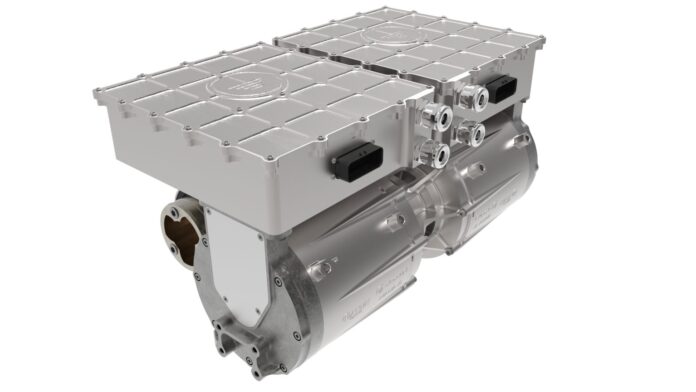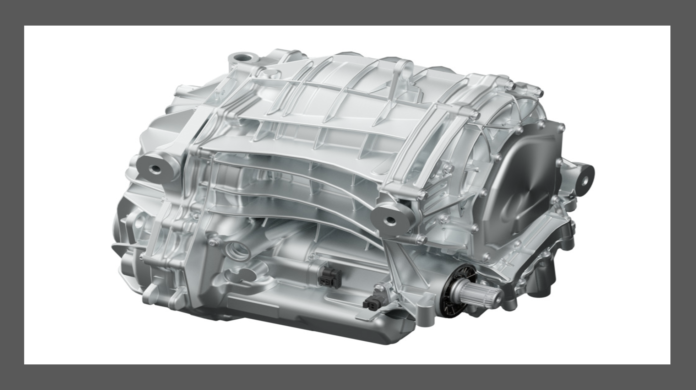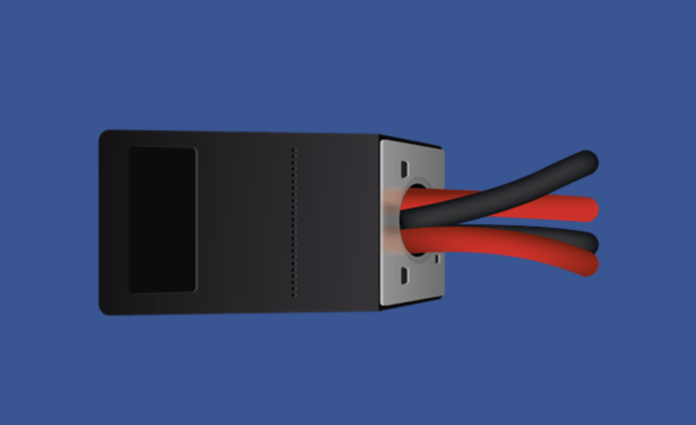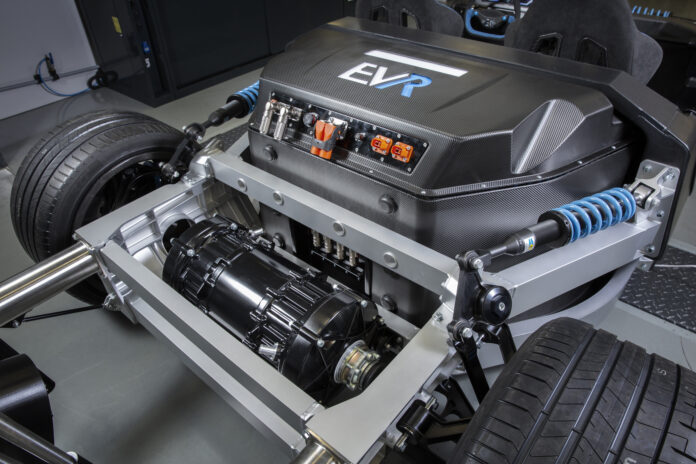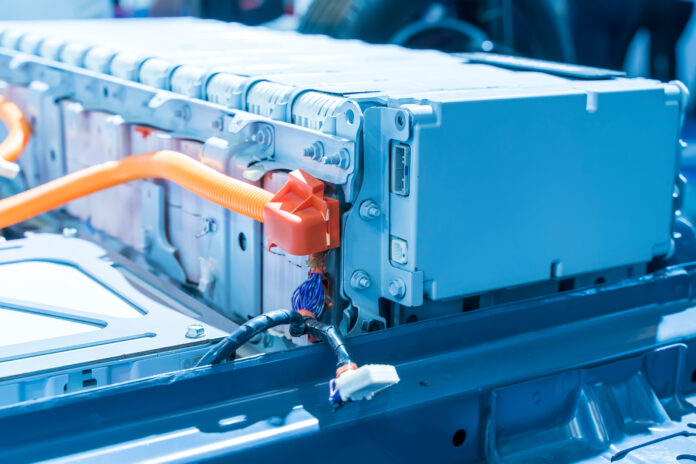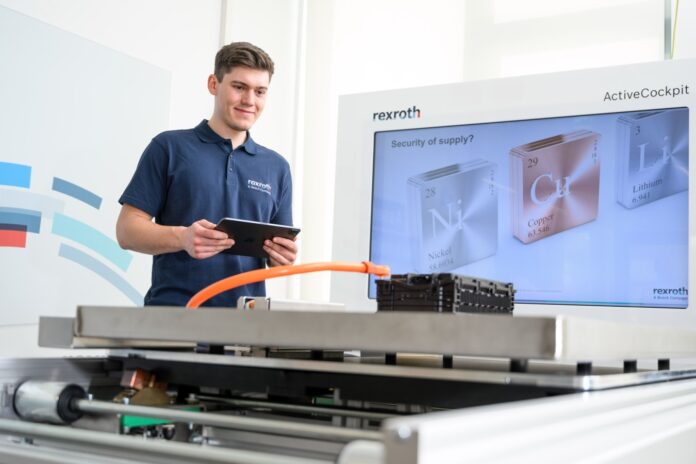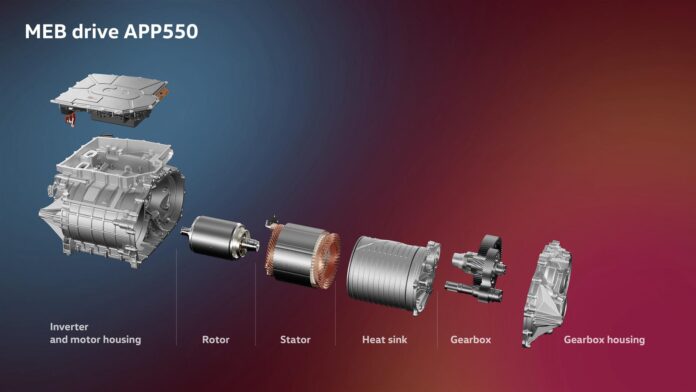Equipmake, developer and manufacturer in the United Kingdom of electrification products for battery-powered electric vehicles’ transmissions, has recently presented a compact, light and high-power drive system for the manufacturers of high-performance electric vehicles.
Ampere-220 e-axle brings a radical change in standard performances for electric sports cars and supercars. How? Combining one of the most advanced electric 3D-printed motors in the world with the whole power electronics, including the silicon carbide inverter and a transmission system integrated into a compact unit that directly powers the vehicle axis.
At the centre, the e-axle presents the Ampere electric motor with a spoked rotor design that has been recently used also in the Ariel Hiper under the form of APM motor of Equipmake.
Extremely light but efficient and cheap, Ampere has a peak power of 220 kW and a maximum motor speed of 30,000 rpm. With a weight slightly under 20 kg, if features a power density of 11 kW per kg, over the double compared to a conventional electric motor. The key of its performances is the combination of the spoke design of Equipmake with the additive manufacturing, which allows 3D-printing the metal structure of Ampere instead of milling it from a solid billet.
Ian Foley, Equipmake CEO, said: “Equipmake has always been at the forefront of innovation in electric motors, with our APM range offering class-leading power densities thanks to their compact, lightweight designs. Ampere showcases the next-gen of motor technology. Combined with our own power electronics, including our silicon carbide inverter, and transmission system, we have created the Ampere-220 e-axle. With such a huge amount of performance in a compact, light unit, one that is also ISO 26262-compliant and ASIL-D ready, it provides the total off-the-shelf solution for manufacturers of electric sports cars, further underlining Equipmake’s position as a leading provider of state-of-the-art electrification systems to the automotive industry.”
An high-power e-axles for electric sports cars and supercars
New Magna motor will equip the cars of a Europe-Based Global OEM
eDS Mid by the Canadian Magna manufacturer is a compact high-speed electric motor that offers a range of scalable power from 100 kW to 140 kW, optimized for 800 V. As high-voltage eDrive system for electric AWD applications, it allows a fast reconnection through a new uncoupling system and provides a high-efficiency inverter with silicon carbide (SiC) technology that shares in the best efficiency, driveability and safety of the category.
Recently, the company has announced that its new electric motor intended for the medium-range has been ordered by a premium European automotive company.
The eDS Mid motor has been designed for medium-size electric cars, then it is likely to be used for compact sedans and for medium/small range SUV.
Automation for the handling and assembly of the electric motor
Due to the collaboration between companies, Statec, expert in the sector of electric motors’ windings, and Weber, specialized in the sector of the technology of the fastener assembly automation, have created an interesting solution of optimal automation for the handling and assembly of the electric motor.
The automated line, fully designed and developed by Statec, allows the electric motor handling while the assembling phase of the threaded component is implemented by SEV automated self-powered screwdriver with Weber vacuum technology.
Weber has announced this new achievement, springing from a partnership aimed at “making complex things simple”.
What advances with Energy Management Module technology?
The rising manufacturer of electric vehicles Mullen Automotive has announced the results of the tests carried out on the technology recently taken over by a joint venture, which notably improves the current performances of the EV, increasing their autonomy. The Energy Management Module (“EMM”) technology substantially increases the autonomy and the efficiency of any present EV battery. The specific tests executed by Element on a large-size OEM electric vehicle have led to a calculated autonomy increase from 269 to 431 miles, corresponding to a 60% efficiency increment.
Furthermore, the EMM technology has been tested by Mullen Automotive engineers on the EV Cargo van in Class 1 of the company by the factory at Troy, Michigan. The results have shown an autonomy increase exceeding 75% for the 42-kWh lithium-ion battery pack, which corresponds to an autonomy estimated by EPA of 186 miles, with very low additional cost and mass. An application of temporary patent for the technology has been registered.
“Seeing the previous EMM test results conducted by Element, along with Global EVT testing, and correlating that with testing by our engineers, we believe this technology is a perfect fit for Mullen’s EV product lineup as well as the advancement in EV technology for the overall automotive industry,” said David Michery, CEO and chairman of Mullen Automotive. “Mullen Advanced Energy Operations plans on licensing this technology to anyone who uses an electric vehicle.”
A platform for hypercars and smart system for batteries
The latest technological news by WAE – Williams Advanced Engineering -concern two innovations. The first is inherent to the launch of Elysia: Pioneering Battery Intelligence to unlock the potential of all electric vehicles. Elysia brings on the mass market revolutionary information, the management and the optimization of batteries, from the automotive, commercial vehicle and electric mobility sectors to the stationary energy storage and more, freeing the potential of the battery component. Elysia offers integrated products based on forefront clouds that together supply customers, including automotive OEMs, fleet operators and battery asset financiers, with the access to information about batteries and the capability of managing, optimizing and improving the performances during the battery’s whole lifecycle, in both the vehicle and in “second life” applications such as the stationary network storage. Another novelty by WAE is the latest iteration of WAE EV platforms, EVR is focused on the growing electric hypercar sector, with a lightweight composite structure that mounts the high-performance battery system in the middle of the vehicle, optimising centre of gravity.
EVR can support a range of electric hypercar configurations, from track-only vehicles where power-to-weight is maximised to roadgoing models, both open-roof Targa and fixed-roof GT architectures. This is made possible by the architecture’s central tub which has been designed from day one to allow for such flexibility, including open roof design, while still featuring the very latest performance technology such as active aerodynamics.
ElevenEs establishes the first manufacturing plant of LFP battery cells in Europe
The production site, located in Subotica, Serbia, specializes in producing high-quality LFP prismatic cells which are shipped to customers for sample A and B testing across a variety of applications, including electric cars, buses, trucks and energy storage systems.
The LFP cell market is expected to see significant growth in the coming years, with over nine-fold growth in global sales over the past two years alone, and is forecasted to be the number one battery cell chemistry utilized by the end of this decade.
This comes as no surprise, as LFP battery cell chemistry offers greater safety, lower cost, and increased sustainability since the technology does not utilize nickel or cobalt. LFP battery cells also last three times as long as the most common competing technologies, making them the most cost-efficient battery solution on the market. Along with the overall benefits of LFP chemistry, ElevenEs’s EDGE battery cells offer higher energy density on a pack-level compared to other LFP cell designs.
In addition to their focus on providing high-quality LFP cells, ElevenEs has implemented a range of initiatives to promote sustainable production, including the use of renewable energy sources for facility operation, a combination of hydro, wind and solar power.
The company also plans to source all the necessary active materials from Europe which will limit the carbon footprint of the LFP battery cells produced.
The opening of the manufacturing facility represents a significant step forward for ElevenEs. The industrial facility will expand to become the company’s Mega-Factory in 2024, producing 500MWh, focusing, but not limited to, C and D samples. ElevenEs’s roadmap includes operating two Gigafactories: Giga-I producing 8GWh by 2026 and Giga-II producing 40GWh by the end of 2027. At which point, the company will operate at a combined capacity of 48GWh – which equates to enough battery cells to power one million medium-sized electric cars each year.
Stellantis achieves a supply of cobalt sulphate and nickel for EV batteries
Stellantis and Alliance Nickel Ltd have recently announced the signing of a binding agreement for the supply of 170,000 tonnes of nickel sulphate and of 12,000 tonnes of cobalt sulphate for an initial period of five years.
The partnership between Stellantis and Alliance Nickel started in October 2022 with a non-binding memorandum of understanding for the supply of materials for electric vehicles’ batteries.
The agreement reached represents around 40% of the expected yearly production of NiWest Nickel-Cobalt Project in West Australia.
Moreover, Stellantis has accepted to buy 9.2 million Euros of new Alliance Nickel shares, so obtaining a final stake of 11.5% and the right of appointing a member of Alliance Board of Directors.
“The engagements established by Dare Forward 2030 and our leadership role in the decarbonization are based on the guaranteed supply of key materials for our electric vehicles”, stated Carlos Tavares, CEO of Stellantis. “The partnership with Alliance Nickel is an essential element of our plan, aimed at providing a green, safe and accessible mobility all over the world”.
“The binding agreements with Stellantis, one of the major more innovative vehicle manufacturers in the world, represent a cornerstone for the future of Alliance. They strengthen our development strategy for the NiWest Nickel-Cobalt Project, they open new important funding options and they consolidate the agreement with a customer and a prime investor”, affirmed Paul Kopejtka, Managing Director and CEO of Alliance. “We wish a profitable collaboration with Stellantis and we will go on carrying out our strategy, to become the reference Australian supplier of cobalt and nickel sulphate for global markets. This is really a ‘We Win Together’ result for both parties”.
Automated plant for the disposal of batteries
In the light of the growing demand for batteries and for the recycling of the raw materials contained, such as lithium, cobalt and nickel, Bosch has developed suitable machines, equipment and software. Bosch Rexroth supplies in fact Battery Lifecycle Company, a joint venture between TSR Recycling, sister company of Remondis, and Rhenus Automotive, with the first fully automated system in Europe for the discharge and the disassembling of battery modules in its headquarters in Magdeburg. The site will test the worn-out batteries from several manufacturers, will carry out their complete discharge and will prepare them for the successive dismantling.
This pilot project is the first that uses such discharge solution patented by Bosch: battery modules will be chemically deactivated by means of a reliable process, which will allow executing the following processing without voltage. Modules’ residual energy can be used to operate the recycling system. The project includes ergonomically flexible workstations for the technical analysis and the safe dismantling of batteries, transfer systems for the transport of batteries of different classes and weight and, finally, software to guide players in the various process phases. Bosch also offers a solution of traceability and monitoring of the conditions, of the origin of the material and of batteries’ processing status.
Stefan Hartung, president of Bosch Board of Directors, stated: “The electromobility will succeed in successfully spreading in the long term only if the sufficient raw materials for the production of batteries will be available. Recycling plays a fundamental role, concerning this, and helps us make the production more sustainable. What we do now will determine tomorrow’s course. The batteries that are currently installed in vehicles will reach their life end within 10-15 years. We must benefit from this time lapse to create the necessary recycling capacity “.
The new Volkswagen motor for the electric ID range has more power and torque
Due to the new rear APP550 motor, the ID range by Volkswagen, inherent to full electric models, will enjoy a new thruster since the end of 2023, able to offer higher performances combined with higher efficiency.
The new generation of motors has a power of 210 kW (286 HP) with a maximum torque of around 550 Nm, depending on the vehicle’s transmission ratio. The significantly higher torque, in particular, grants a higher power delivery, in both standstill and at higher speed conditions. The rotor, as counterpart, is equipped with a more powerful permanent magnet that has higher load capacity.
Furthermore, the new motor has an energy-saving cooling system that works without an oil pump electrically driven.
Karsten Bennewitz, Head of Powertrain and Energy Systems in Development explained: “Since the available space has not changed, we had to develop a new motor that achieves significant performance and efficiency ameliorations, even if it is subjected to the same constraints. This was a great challenge for the team of Technical Development and of Components of the Group. The result demonstrates that we have succeeded in decreasing the use of raw materials, at the same time obtaining a remarkable increase of vehicles’ efficiency“.
More flexibility for EV through the innovative assembly solution
Comau has recently supported Hycan Automotive Technology Co. with a smart welding solution for its assembling line able to grant the multi-model manufacturing of new vehicles powered by alternative energy sources. Integrated by Hycan Hangzhou factory, this automated flexible production system can be used at random on four different platforms, it is fully compatible with the existing manufacturing plants and, currently, it is mass-producing, with an output of 60 units per hour, the 100% electric A06 Sedan and the 100% electric SUV Z03.
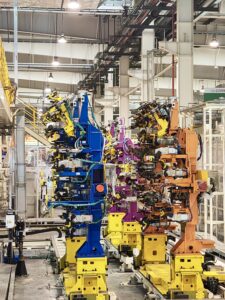 Comau engineers had to ascertain they were developing a highly flexible assembling and welding line, able to keep pace with the automotive company’s constantly evolving production requirements. The plant, in fact, besides facilitating the introduction, the adaptation and the scalability of new models, assures the utmost manufacturing flexibility to Hycan, also in the future.
Comau engineers had to ascertain they were developing a highly flexible assembling and welding line, able to keep pace with the automotive company’s constantly evolving production requirements. The plant, in fact, besides facilitating the introduction, the adaptation and the scalability of new models, assures the utmost manufacturing flexibility to Hycan, also in the future.
The protagonist is the flexible high-precision Body-In-White assembling, with virtual commissioning technologies. Moreover, Comau has added a flexible servo-positioning mechanism to the transport system, to share in shortening the manufacturing cycle, meanwhile granting both scale economies and the capability of satisfying the diversification requirements of Hycan products.

